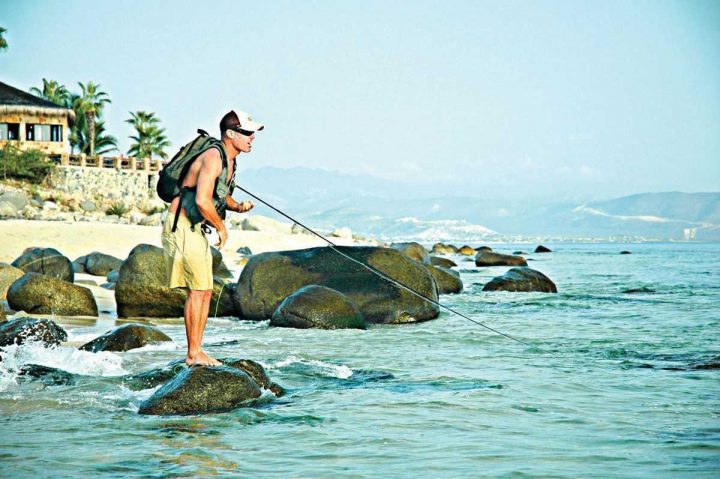Sometimes faster is better. This also applies to retrieving a fly.
There are some saltwater fish that react to a fly that is stripped as fast as possible. Tuna, barracuda, roosterfish, amberjack and yellowtail are good examples. These guys prefer a fly that moves like an Indianapolis race car. If the fly isn’t imitating a fleeing baitfish, and suddenly stops, this group of gamers will turn and swim away.
The two-handed strip is the perfect retrieve for situations dealing with these babies. This retrieve enables the fly to be stripped through the water without breaks or pauses, as happens with the conventional one-handed strip. There is one drawback to using this retrieve: the rod is placed under the arm rather than in the hands, making it almost impossible to lift the rod tip on a strike. Therefore, your fish is hooked with a strip-strike, negating the need for a lift of the rod tip.
For a successful two-handed strip do the following:
- After the fly has been cast place the rod under the arm (right or left).
- Point the rod tip down, keeping the tip on the water at all times.
- Begin the strip by pulling the fly line with your hand at the first stripping guide.
- Repeat this with the other hand.
- There should be a continual motion, changing hands with each strip.
- Vary the speed of the fly as you strip it through the water.
- Strip the fly all the way to the boat and repeat. If you feel a strike, give your line a solid strip-strike.
Note: If there is a fish tracking the fly right up to the rod tip and not striking, sweep the rod tip away from the oncoming fish, keeping the fly moving through the water. This action will engage the fish to track the fly like a heat-seeking missile and initiate a violent reaction strike.
This is a great technique for blue water as well as near-shore fly fishing.
